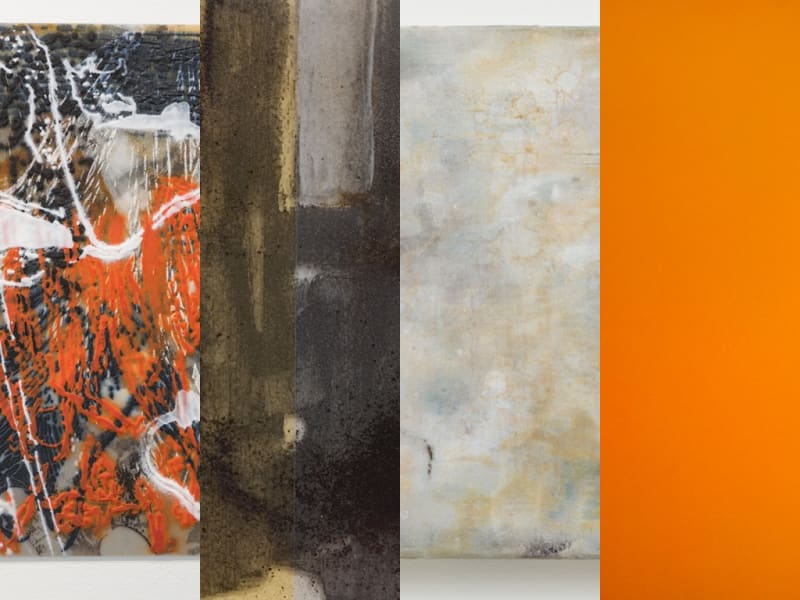Portland, Oregon - Twenty years ago, while in residence at Bullseye Glass Company, renowned artist Narcissus Quagliata worked with several Northwest painters and printmakers, including Lucinda Parker and Christy Wyckoff, teaching them how to translate their work into kiln-glass. Since then, kiln-glass “painting” has been adopted by many artists. The technique has matured into its own material language that uses glass powders, enamels, and kilns to embed atmospheric marks between sheets of glass and build sculptural surfaces through the subtle manipulation of heat. Meticulously layering glass powders, which are applied with sifters more often than brushes, and heating the work to specific temperatures may either fuse the glass into a seamless surface or maintain the particulate quality of the material. It is this aspect of kiln-glass painting that allows for subtle transitions in color and the creation of atmospheric spaces.
Surface and Atmosphere features work by four Northwest artists who use glass as a means to explore color and texture. Susan Harlan creates intricate stencils informed by nature and uses these to layer glass powders onto sheet glass. The accumulated imagery coalesces into dense compositions that reference maps and books, creating non-pictorial landscapes. Similarly, Catharine Newell also draws from nature – in particular, the accretive surfaces of oyster shells – in her recent body of work, such as her piece Oistres V (2016). Ted Sawyer’s what matter (2016) uses subtly shifting, atmospheric color fields that are sometimes jarring, but through consideration become enveloping. Kari Minnick’s compositions are constructed from many sources. In Door (2012), Minnick balances the rough, rock-like, textural quality of the brush strokes with the transparency of sheet glass, generating an experience of looking at and looking through simultaneously.
